Abstract
In studies for the 1993 World development report: investing in health Murray et al. developed the disability-adjusted life year (DALY). This article examines one particular aspect of the DALY methodology: the weighting of life years by age. For the quantitative implementation of this notion Murray proposed a general equation to weight life years by age, which specifies that the years lived between the ages of 9 and 54 years have a weight greater than unity, and for the years outside this range less than unity. The age-weighted life years are used to calculate the "expected years of life lost" (EYLL). Comparison of age-weighted and unweighted age-specific life expectancies shows that the age range which becomes more important due to weighting is not 9-54 years, but 0-27 years. This happens because the EYLL is an age-weighting system in itself, emphasizing the young. The result of piling one age-weighting system on top of the other gives an even stronger emphasis on the young than the EYLL generates by itself. Although this is unlikely to upset the results from the Global Burden of Disease study, we do not think it is desirable. And it is certainly different from what we were led to expect.
Full text
PDF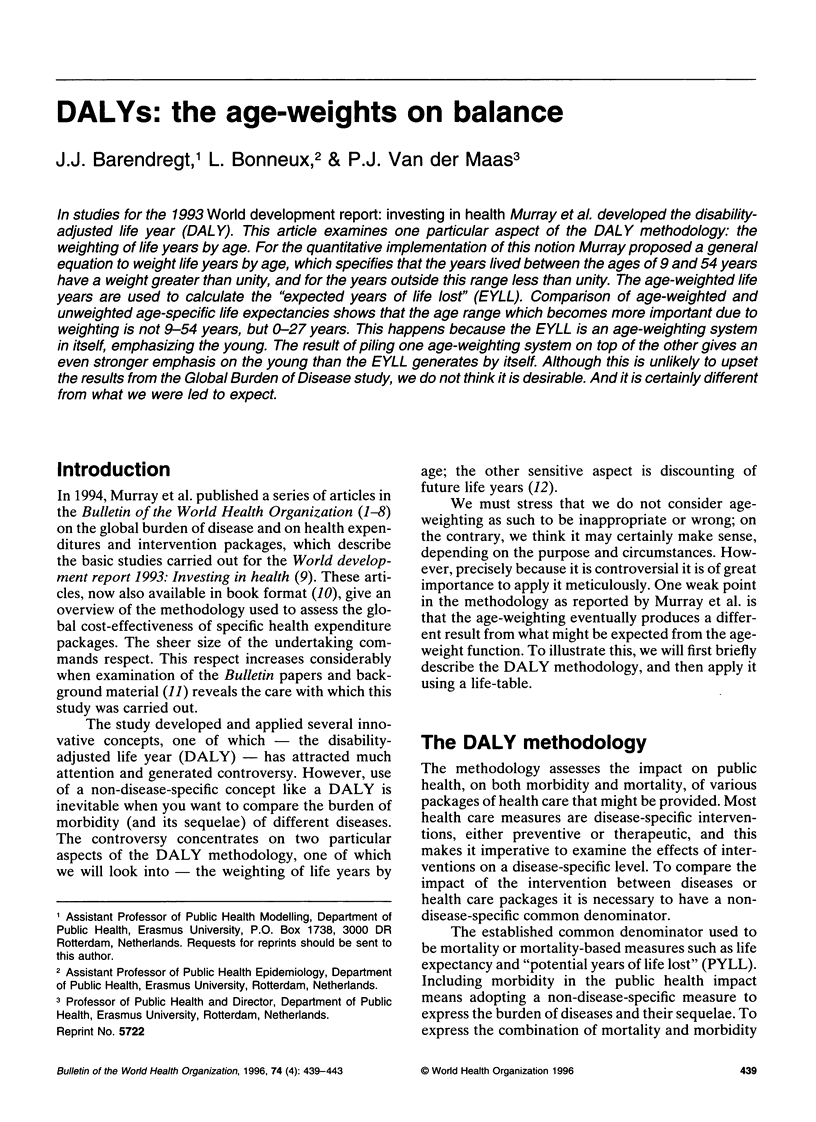
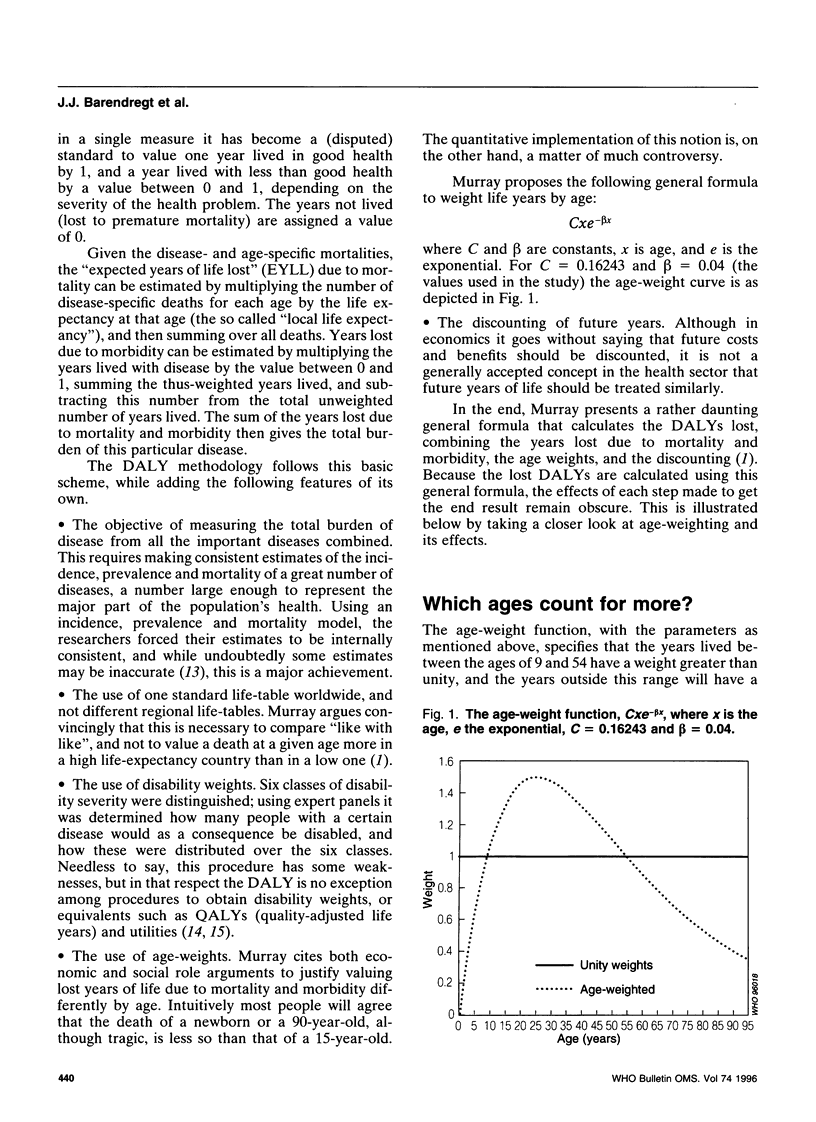
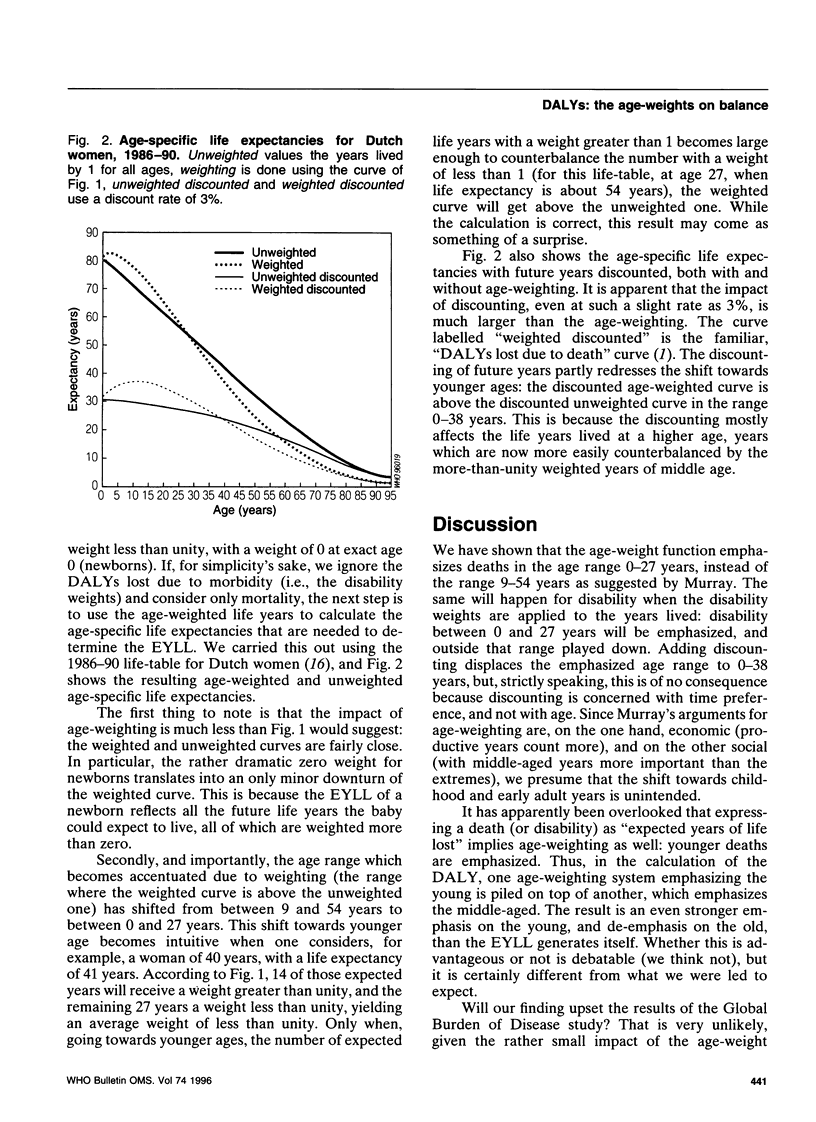
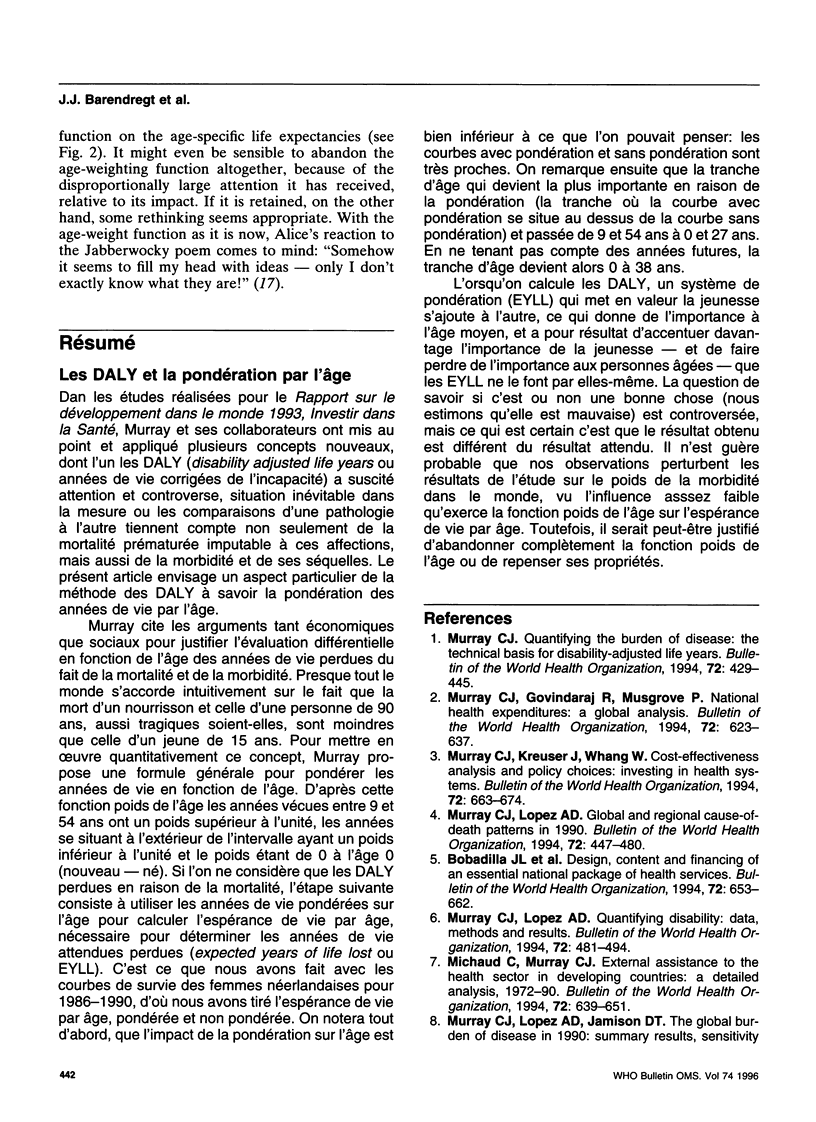
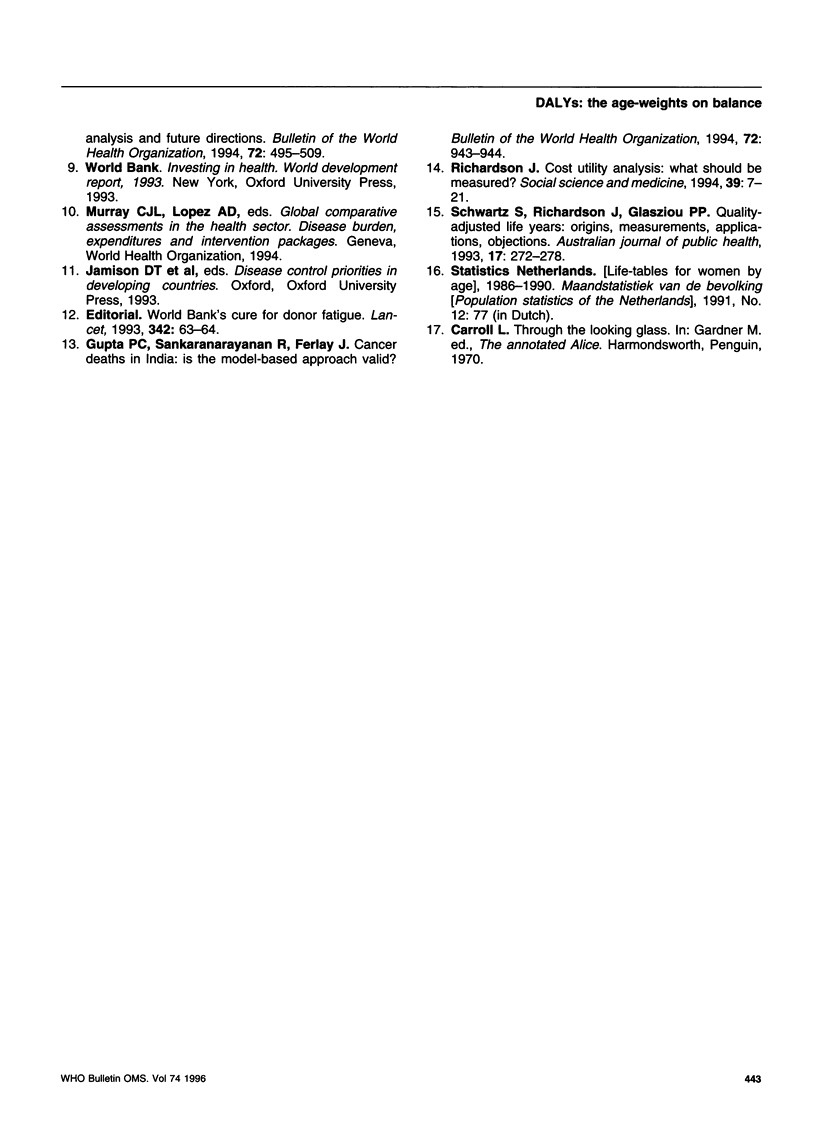
Selected References
These references are in PubMed. This may not be the complete list of references from this article.
- Bobadilla J. L., Cowley P., Musgrove P., Saxenian H. Design, content and financing of an essential national package of health services. Bull World Health Organ. 1994;72(4):653–662. [PMC free article] [PubMed] [Google Scholar]
- Gupta P. C., Sankaranarayanan R., Ferlay J. Cancer deaths in India: is the model-based approach valid? Bull World Health Organ. 1994;72(6):943–944. [PMC free article] [PubMed] [Google Scholar]
- Michaud C., Murray C. J. External assistance to the health sector in developing countries: a detailed analysis, 1972-90. Bull World Health Organ. 1994;72(4):639–651. [PMC free article] [PubMed] [Google Scholar]
- Murray C. J., Govindaraj R., Musgrove P. National health expenditures: a global analysis. Bull World Health Organ. 1994;72(4):623–637. [PMC free article] [PubMed] [Google Scholar]
- Murray C. J., Kreuser J., Whang W. Cost-effectiveness analysis and policy choices: investing in health systems. Bull World Health Organ. 1994;72(4):663–674. [PMC free article] [PubMed] [Google Scholar]
- Murray C. J., Lopez A. D. Global and regional cause-of-death patterns in 1990. Bull World Health Organ. 1994;72(3):447–480. [PMC free article] [PubMed] [Google Scholar]
- Murray C. J., Lopez A. D. Quantifying disability: data, methods and results. Bull World Health Organ. 1994;72(3):481–494. [PMC free article] [PubMed] [Google Scholar]
- Murray C. J. Quantifying the burden of disease: the technical basis for disability-adjusted life years. Bull World Health Organ. 1994;72(3):429–445. [PMC free article] [PubMed] [Google Scholar]
- Richardson J. Cost utility analysis: what should be measured? Soc Sci Med. 1994 Jul;39(1):7–21. doi: 10.1016/0277-9536(94)90162-7. [DOI] [PubMed] [Google Scholar]
- Schwartz S., Richardson J., Glasziou P. P. Quality-adjusted life years: origins, measurements, applications, objections. Aust J Public Health. 1993 Sep;17(3):272–278. doi: 10.1111/j.1753-6405.1993.tb00149.x. [DOI] [PubMed] [Google Scholar]


